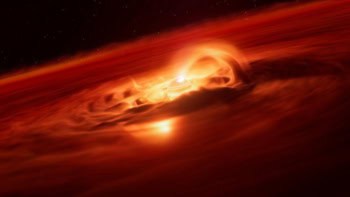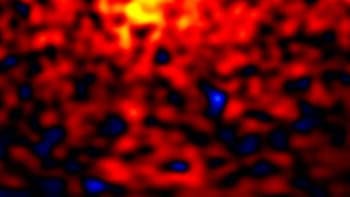
The first flyby of Mercury by the Messenger probe has shown the innermost planet to be a surprisingly dynamic place, according to its NASA mission team.
Among the barrage of new data are observations that Mercury’s magnetic field is probably generated by a molten outer core, and that the planet’s peculiar surface features were produced by ancient volcanic flow that solidified and slowly contracted. Scientists had been speculating about these properties since 1974, when NASA’s Mariner 10 probe made the first scouting mission to the planet.
Sean Solomon, the principal investigator for the Messenger mission, says that the flyby — which took place in January this year — hints at what other observations will be possible when the spacecraft settles into orbit in 2011.
“Our Mercury flyby in January was our first close-up view of the innermost planet in nearly 33 years,” Solomon told physicsworld.com. “We have a payload that takes advantage of three decades of technology beyond that available to Mariner 10, and the flyby provided a wonderful return of new observations by every instrument on board.”
Unusual planet
Many scientists consider Mercury — with its high density composition, heavily cratered surface and magnetic field — to be the most unusual planet. It was produced at roughly the same time and via the same processes as the other terrestrial planets, but turned out very different.
The number of impact craters on its surface implies that Mercury’s geological activity stopped fairly early. However, when Mariner 10 uncovered 45% of the planet’s surface it found that much of it was broken up into prominent escarpments up to 600 km in length, implying that the surface has suffered a period of contraction. Messenger has now uncovered another 21% of the surface in more detail, and has found that these escarpments are indeed widespread.
“We’ll image another 30% of the planet on our next flyby, on 6 October,” explains Solomon. “Once in orbit we will be able to image the entire planet, except for the floors of the polar craters in permanent shadow. [But] we will peer into even those craters with other instruments, including our gamma-ray and neutron spectrometers, and our laser altimeter.”
Messenger has also found the best evidence yet that Mercury — like Earth — generates its magnetic field through motion in its molten outer core. This evidence is a measurement of a strong dipolar field and a lack of shorter-wavelength fields. If the latter had been detected, it would have implied that — like Mars — a remnant magnetic field had been “frozen” into the planet’s surface.
Waiting for orbit
Other firsts for Messenger include a measurement of ionized particles in the atmosphere, which tell how Mercury’s magnetic field interacts with the solar wind; a chemical analysis of the surface, in which iron makes up less than 6% by weight (despite being abundant in the core); and a record of surface strain generated by contraction, which is at least a third more than previously thought.
However, it is the data taken when Messenger reaches orbit in 2011 that the mission team is waiting for. This will bring global data so that, for example, the scientists can test competing models for how Mercury was formed and how its magnetic dynamo works. “The scientific goals of this mission will be addressed most fully from the orbital measurements,” says Solomon.
The data from the Messenger flyby are presented in 11 reports published by Science.



